In Praise of Pistachios
A pistachio is a wonder.
For much of its growth cycle, its shell is empty. Only later does the tiny, sweet, green edible kernel grow inside.
It’s a phenomenon that has even surprised many a first time grower.
This summer, I was invited by the American Pistachio Growers to Fresno to watch the annual pistachio harvest.
There are more than 650 pistachio growers in Arizona, New Mexico and California. The Golden State boasts the most with more than 98 percent of the total growers and more than 300,000 acres of pistachio trees.
The pistachio crop may still pale in comparison to California’s almonds, which make up 940,000 acres. But pistachios remain an important crop, bringing in $1.3 billion in revenue. Indeed, the pistachio crop is expected to double in the next seven years.
With its hot, dry climate and rich soil, the Central Valley became a natural place to plant pistachios, which hail from the Middle East. In the 1960s, plantings began in the Fresno area. Nowadays, you’ll find family farms that have grown pistachios for generations.
Although they’re one of the more drought-tolerant trees, this year’s pistachio crop, which just finished harvesting, is about 30 percent lower than usual.
Once the kernel forms inside the shell, it keeps growing until it gets so big that it splits the shell, the sign that it is ripe for picking. Hence, the naturally created slit that pistachios in the shell possess, which makes it easier for us to crack them open with our fingers. A real treat is getting to taste a just-picked pistachio. Unlike salted, roasted ones from the store, a fresh one is softer and even more buttery tasting.
The nuts are harvested by machine, then sent to a hulling and drying facility. After that, they go to a packing facility where they are sorted for defects, pasteurized, brined, and packed. One in four pistachios ends up in China, which is the largest market for the nut.
Who can blame the Chinese for their voracious appetite? After all, they’re not alone. Pro cyclist Mark Cavendish is a brand ambassador for pistachios, and incorporates them into a regular part of his diet. So do members of the Denver Broncos and New England Patriots.
Ounce for ounce, pistachios have been found to have more protein than cooked halibut, more fiber than cooked broccoli and more potassium than bananas.They are lower in fat than almonds and weigh in at 160 calories for 49 nuts.
I like them because they taste so darn good — in baked goods, savory dishes, and just cracked right out of the shell.
From now on, I’ll never look at one the same again, knowing all the history and work that has gone into growing them.
Pistachio Recipes to Try: Pistachio and Pomegranate Meatballs

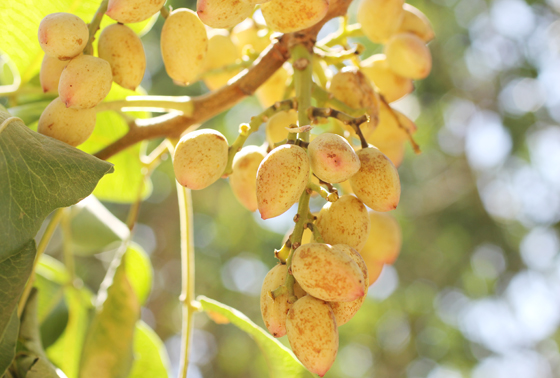
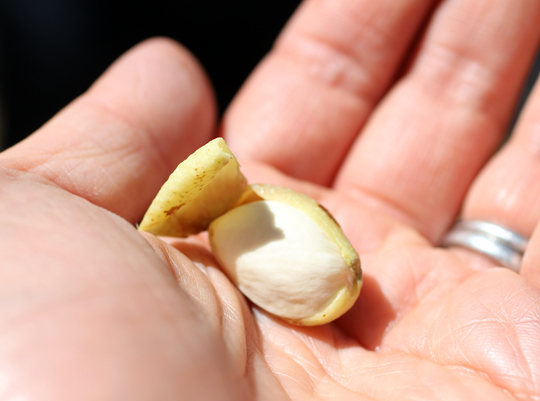
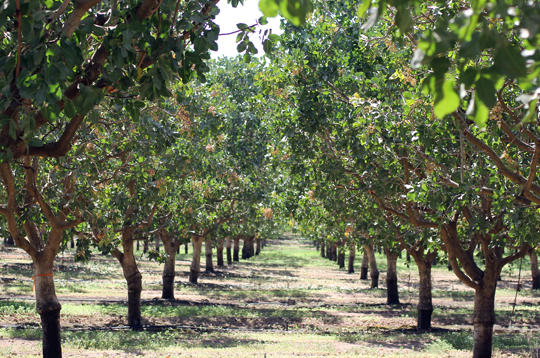
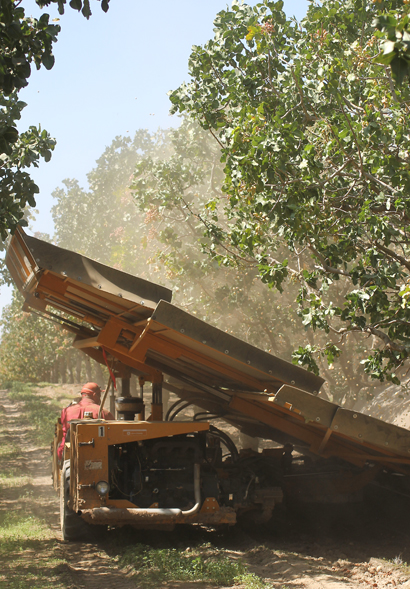
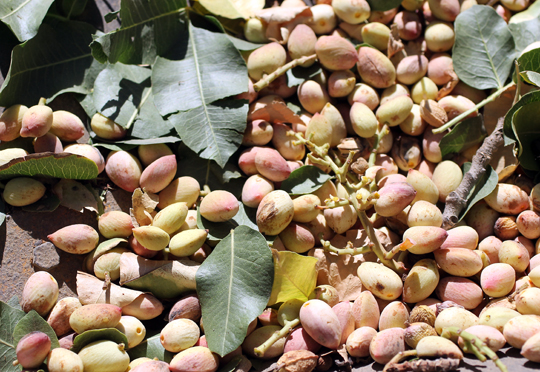
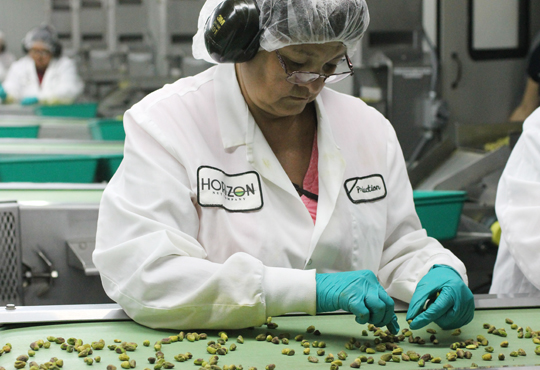
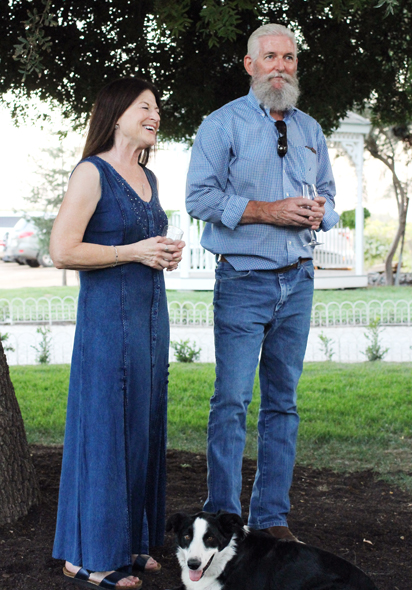

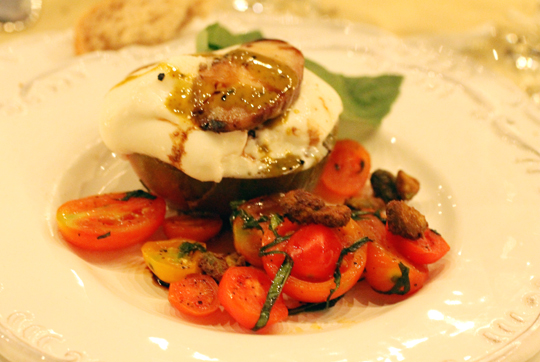
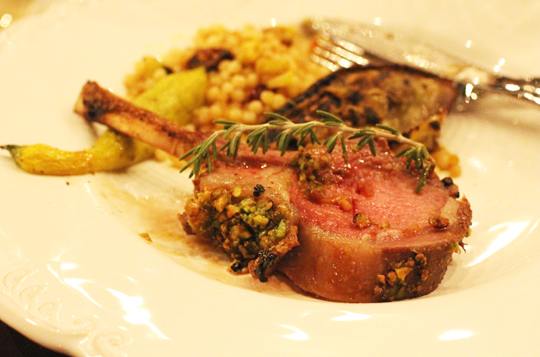
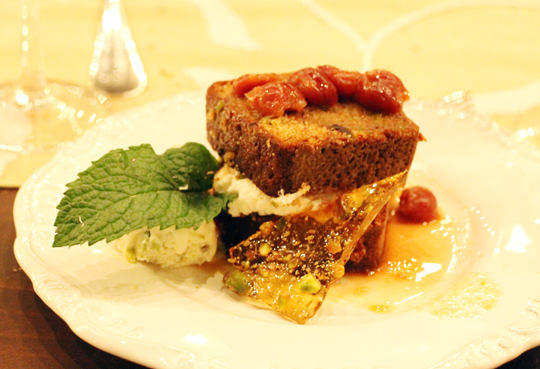
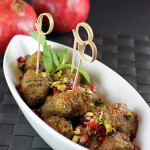

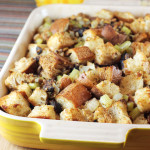
Wonderful place and gorgeous food.
I love pistachios, but unfortunately, here they are out of price.
Cheers,
Rosa
What a fun trip!
I’ve never seen pistachios with such soft shells. That’s awesome that they’re lower in fat than almonds.
Fresno has some of the hardest working farmers, and it’s always nice to remember how much work it takes to get one product to the table. And how fun to have dinner in the fields.
Pistachios are so great, aren’t they? This sounds like a terrific trip — so much fun. Thanks for this.
ahhh the pistachio bars – the whole reason i started following your blog!! 🙂 those bars are truly magnificent!!!
Soooooo jealous. They’re my favorite nut. Looks like a wonderful trip. The meatballs are first on my “must make soon” list.
Happy Thanksgiving.
i go back and forth on naming my favorite nut, but pistachios are always very high on the list!